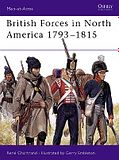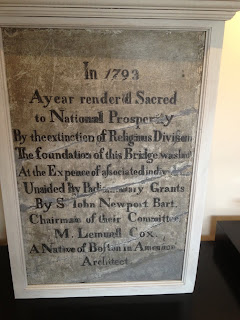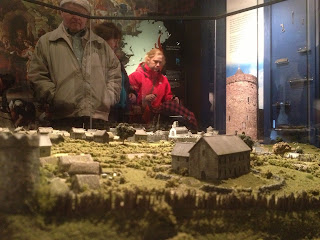General Thomas Francis Meagher
A few weeks ago, it seems like an age now, we went to Waterford for a few days. It was a well deserved break, though one that was all to short. Mrs Kinch, Cousin Basil and I relaxed, used the poor and the gym in the hotel and went out for little expeditions. Waterford is a lovely town and I would like to go back there, but I thought I might share some of the pictures I took there.
This chap is General Thomas Francis Meagher was born in Waterford. His varied military career included service in the Young Irelanders and the US army during the American Civil War. Meagher was one of those called "a political general". His real skill was in the raising of troops rather than the leading them into battle, a characteristic he shared with General Sigel. I've no great sympathy for the man - but to slight him for being good at one thing and bad at the other seems silly.
Artifacts associated with Meagher's brother Henry, including a cameo presented to him
by Pope Pious IX, a chap who would not be my favourite Pope.
Henry Meagher served in the Papal Guard for seven years and these artifacts belonged to him and did not as our tour guide informed us belong to Thomas.
The estranged wife of a Sir Thomas Wyse married one of the Bonaparte's - this plague was on her home up until relatively recently. Curiously it seems to memorialise her first husband.
A sword presented to Meagher by the Napper Tandy Artillery company of New York
John Redmond MP
John Redmond MP was also from Waterford and is many ways probably one of the more admirable figures in Irish history.
Bridge Plaque erected by the Protestant controlled Corporation to record the opening of the Timbertoes Bridge.
While 1829 tends to be the date bandied about with regard to Catholic Emancipation in Ireland, it is often forgotten that the majority of the heavy lifting was done forty years previously. I like this plaque mainly because deciding to commemorate the Catholic Relief Act of 1793 with a bridge seems at odds with most of what we are given to understand of the Irish history of the time. I love the willingness of ordinary people to just get on with it.
A rather splendid Georgian spread
This picture was taken in the Bishops Palace which has been wonderfully restored and features a very well presented and organised tour.
King Billy
Again from the Bishops Palace - sadly, my camera phone did it little justice. A man whose reputation in the historical record was done a great deal of good by being preceded James II, I've always thought.
A very bad picture of Lord Roberts of Kandahar
Bobs as he was always known was born in India of a Waterford famiy. They had some artifacts relating to the family in the Bishops Palace, though without much context.
"E's a little down on drink,
Chaplain Bobs;
But it keeps us outer Clink
Don't it, Bobs?"
Bobs by Rudyard Kipling
A letter written by Bobs to his grandson explaining he should stay in school and not run away to the Great War.
A 28mm Diorama in the medieval museum. Quite nicely done I think you'll agree.
A 1/300 (ish) model of Waterford around the 13th century (if memory serves).
Waterford was a centre of the wine trade in Ireland at the time and local merchants had great success selling Irish produce in France and importing wine. Curiously enough, Waterford is also the oldest city in Ireland as it was founded by Viking raiders several decades before Dublin. The Viking were driven out, only to return in 912 AD, but you can't have everything.
Most of Waterford's medieval troubles appear to have grown from it's importance as a commercial centre as various pretenders to the throne attempted to take the city in order to finance their operations. It's motto, "Waterford remains the untaken city" is a reference to it's (almost) perfect record of withstanding sieges.
Doesn't it look sharp? I think I spotted some Timecast buildings in there.
Archery has always been important to the history of Waterford.
A curiously unattended and apparently fully functional crossbow - Cousin Basil and I were restrained from putting this to the test by Mrs Kinch, whose keen eyes had noticed what the tour guides had not.
The Great Charter - obviously "cut and paste" has improved somewhat since then
Waterford was made a royal city in 1171 by King Henry II. The great charter above certainly contains 12th century pieces and was stitched together in the 14th century to demonstrate the antiquity of the city's claim to a wine monoply.
Henry VIII's cap of maintenance
This was a special hat that Henry VIII wore while collecting taxes I believe. He gave it to the Wyse family, William Wyse being the mayor at the time, as a sign of his particular esteem for the city of Waterford.
On examining it, he appears to have possessed a very large head.
The flag of the Irish Brigade hanging in Doolan's Pub
And after all that culture and a very fine meal in a French restaurant whose name escapes me, we went to Doolan's pub which I can recommend unreservedly. It reminded me of those "proper boozers" that are an endangered species in Dublin these days and we had a great night.
We really enjoyed our time in Waterford. I'm looking forward to going back there.
































































Great post, Conrad. Very informative.
ReplyDeleteJohn Redmond looks an awful lot like 'Gorgeous' George Galloway.
You take that back!
DeleteThanks, quite interesting. Although, I'm a little curious about how, precisely, you used the poor.
ReplyDeleteIn answer to your question.
DeleteShamelessly, old chap. Shamelessly.
"Used the poor" - are there no prisons? Are there no workhouses?
ReplyDeleteA most splendid walk through Irish history, my dear Kinch. I have a soft spot in my heart for Tom Meagher. You are exactly right, he was the political general par excellence and saw in the Civil War both his moment and that of Irish Americans generally. Period propaganda makes him out to be a second Achilles when in fact he was a lackluster soldier who faded away somewhat ingloriously, falling drunk off a riverboat and drowning after the war, His chaplain Fr Corby was a stout chap.
Well Mike, he wouldn't be my favourite civil war general - but I think it's unfair that he gets the slating that he does. He was a great recruiter and neither Sherman nor Grant would have been able to accomplish much without troops. That his performance on the battlefield was poor is beyond doubt - but it doesn't mean he was useless.
DeleteWhat would Wellington have been without Beresford?
A fine armchair tour, especially for those of us not likely to get there anytime soon, thanks. Not a shard of crystal to be found?
ReplyDeleteI found some crystal alright - though it appeared to be wrapped around some Jameson.
DeleteA most entertaining and informative read CK. I was particularly taken with the shot of Henry VIII's Cap of maintenance - that's the sort of thing that sends the old shivers down my spine, what an amazing object.
ReplyDeleteThank you for the tour.
Lee.
You're very welcome!
Delete